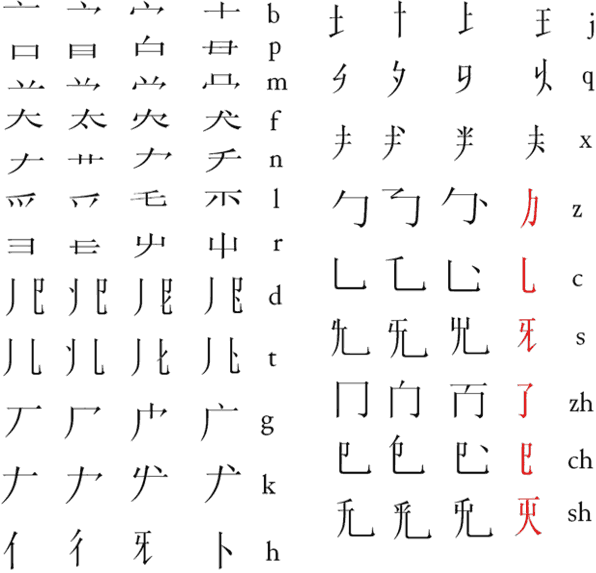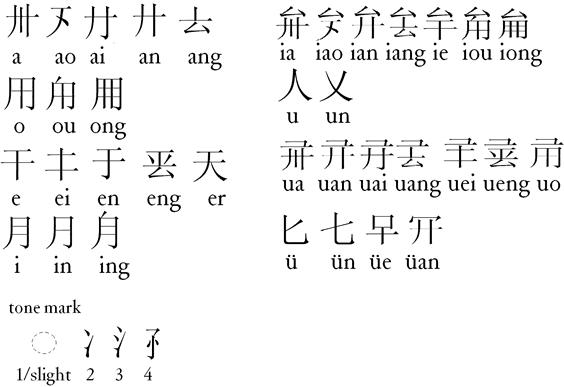Xiě Yùn

Xiě Yùn was invented by Christopher Yale Tang (唐泰川)
in 2002. He was inspired to invent it after reading a book about
Jurchen, the ancient language of the Manchus. He
was amazed that Jurchen characters looked very similiar to Chinese
characters, but that he could read hardly any of them. So he came up
with the idea of devising a writing system for Chinese which could
represent the pronunciation and also look like Chinese characters.
Notable features
- Xiěyùn (写韵) means “writing pronunciation”
- Direction of writing: left to right in horizontal lines
- Xiěyùn includes 21 consonants. Each consonant has four
shapes depending on the tone of the syllable (the neutral tone and tone
1 share the same types) - Xiěyùn includes 36 vowels, each of which has one shape
- When a syllable begins with a vowel, one of the three special voiceless
symbols is added on the left of the vowels to represent tone 2, 3, and 4.
Tone 1 and the neutral tone are not marked. - b, p,m, f, l, n, r are written above vowels
- g, k, h, j, q, x are written on the left side of vowels
- Vowels are written inside t, d, z, c, s, zh, ch and sh,
except the red ones, which are written on right of vowels; - No consonants represent y or w. Syllables beginning
with them are considered as beginning with vowels (i and u) - The Latin transliteration in the chart is Hanyupinyin
- There’s only one punctuation mark, a circle, as in ancient Chinese
Xiě Yùn script
Initials

Finals and tones

Sample text in the Xiě Yùn script

This text in simplified Chinese characters
人人生而自由,在尊严和权利上一律平等。他们赋有理性和良心,并应以兄弟关系的精神互相对待。
Transliteration
Rénrén shēng ér
zìyóu, zài zūnyán hé quánlì
shàng yīlǜ píngdĕng. Tāmen
fùyŏu lĭxìng hé liángxīn,
bìng yīng yĭ xīongdì guānxì
de jīngshén hùxiāng dùidài.
Translation
All human beings are born free and equal in dignity and rights. They
are endowed with reason and conscience and should act towards one another
in a spirit of brotherhood.
(Article 1 of the Universal Declaration of Human Rights)
